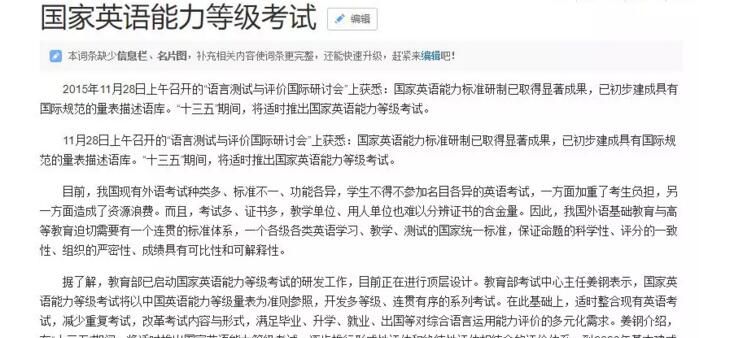07年全国硕士研究生入学考试英语模拟试题四
|
Section I Use of English Directions: Read the following text. Choose the best word(s) for each numbered blank and mark A, B, C or D on ANSWER SHEET 1. (10 points)? Man has always been free to make choices or decisions for himself, given an environment that would permit such choices to be made. Even in times of 1 or war, individuals have had 2 choices 3 whether they would flee, fight, attempt to affect a compromise. It was Aristotle who firmly believed 4 man is the being who makes himself. Further 5 for the concept of self-responsibility can be found in the writings of Thomas Aquinas, who stated, "Man differs from the irrational creatures in . . . that he is 6 of his own acts. " As babies, we had to 7 others in our environment for the most fundamental things. We did make our comforts and discomforts 8 , but basically others 9 our experiences to us. We were virtually helpless and 10 the mercy of others, usually our parents. As we grew older, increased intellectual development resulted in increased behavioral options' 11 available to us. 12 these options were usually under numerous restrictions, we were 13 on our way to expanding our 14 of self-responsibility. From the teen years on, it is the individual who is willing to 15 responsibility for his or her own choices, decisions, and behavior, 16 is regarded as "mature" and well-developed, psychologically 17 . Humanistic theorists viewed man as essentially free to accept responsibility for directing his own life and in 18 his own destiny. The individual becomes 19 he or she "decides" to become, and must accept the responsibility for the 20 of his or her life. As Jean Paul Sartre has put, "We are our choices. " 1 [A]poverty [B]success [C]peace [D]persecution 2 [A]any [B]no [C] certain [D]multiple 3 [A] on to [B] as to [C] except for [D] apart from 4 [A] which [B] what [C] that [D] when 5 [A] support [B]proof [C] justification [D] evidence 6 [A] master [B]commander [C] manipulator [D] chief 7. [A] stand by [B] resort to [C] side with [D] rely on 8. [A] knowing [B] known [C] know [D] to know 9. [A] distributed [B] dictated [C] allocated [D] ordered 10. [A] with [B]in [C]at [D] on 11. [A] became [B] become [C] becoming [D] to become 12. [A] While [B]If [C] Because [D] Although 13. [A] long [B] far [C] much [D] well 14. [A] realm [B] territory [C] topic [D] subject 15. [A] take [B] make [C] put [D] set 16. [A] what [B] whom [C] who [D] which 17. [A] talking [B] speaking [C] explaining [D] defining 18. [A] building [B] shaping [C] opening [D] depicting 19. [A] what [B] that [C] who [D] as 20. [A] graph [B] program [C] chart [D] course Part II Reading Comprehension Part A Directions: Read the following four texts. Answer the questions below each text by choosing A, B, C, D. Mark your choice on ANSWER SHEET 1. (40 points) Text 1 The extension of democratic rights in the first half of the nineteenth century and the ensuing ?decline of the Federalist establishment, a new conception of education began to emerge. Education was no longer a confirmation of a pre-existing status, but an instrument in the acquisition of higher status. For a new generation of upwardly mobile students, the goal of education was not to prepare them to live comfortably in the world into which they had been born, but to teach them new virtues and skills that would propel them into a different and better world. Education became training; and the student was no longer the gentleman-in-waiting, but the journeyman apprentice for upward mobility.? In the nineteenth century a college education began to be seen as a way to get ahead in the world. The founding of the land-grant colleges opened the doors of higher education to poor but aspiring boys from non-Anglo-Saxon, working-class, and lower-middle-class backgrounds. The myth of the poor boy who worked his way through college to success drew millions of poor boys to the new campuses. And with this shift, education became more vocational: its object was the acquisition of practical skills and useful information.? For the gentleman-in-waiting, virtue consisted above all in grace and style, in doing well what was appropriate to his position; education was merely a way of acquiring polish. And vice was manifested in gracelessness, awkwardness, in behaving inappropriately, discourteously, or ostentatiously. For the apprentice, however, virtue was evidenced in success through hard work. The requisite qualities of character were not grace or style, but drive, determination, and a sharp eye for opportunity. While casual liberality and even prodigality characterized the gentleman, frugality, thrift, and self-control came to distinguish the new apprentice. And while the gentleman did not aspire to a higher station because his station was already high, the apprentice was continually becoming, striving, struggling upward. Failure for the apprentice meant standing still, not rising. 21.Which of the following is true of the first paragraph?? A . Democratic ideas started with education.? B . Federalists were opposed to education.? C . New education helped confirm people’s social status.? D . Old education had been in tune with hierarchical society. 22.The difference between “gentleman-in-waiting” and “journeyman” is that? A . Education trained gentleman-in-waiting to climb higher ladders. B . Journeyman was ready to take whatever was given to them.? C . Gentle-to-waiting belonged to fixed and high social class.? D . Journeyman could do practically nothing without education.? 23.According to the second paragraph, land-grant college? A . belonged to the land-owning class.? B . enlarged the scope of education.? C . was provided only to the poor.? D . benefited all but the upper class.? 24.Which of the following was the most important for a “gentleman-in-waiting”?? A . Manners.? B . Education.? C . Moral.? D . Personality.? 25.The best title for the passage is? A . Education and Progress.? B . Old and New Social Norms.? C . New Education: Opportunities for More.? D . Demerits of Hierarchical Society.? Text 2? Eating right to prevent heart disease may seem complicated and confusing, but it's a breeze compared with trying to design an anticancer diet. Cardiovascular disease is relatively simple; it's the result of normal bodily processes taken to the extreme. Cancer, by contrast, involves changes in the programming of DNA within the nuclei of individual cells. Beyond that, heart disease is an illness that affects a single organ system, while cancer is dozens of different diseases that target body parts as radically different as the brain, breast and bone. That being the case, it's no surprise that the relationship between diet and cancer is still largely a matter of educated guesswork—and in many cases, the guesses have turned out to be wrong. Take the much publicized link between high-fat diets and breast cancer, for example. Women, who live in Western countries, where high-fat diets are the norm, tend to have high breast-cancer rates. Even more telling: women of Japanese ancestry who live in the U. S. get the disease six times more often than their grandmothers and great-grandmothers in Japan. Yet a huge recent study of 90 000 women has refuted the breast cancer-fat link. A similar process of educated-guess-and-error led people to load up on the nutritional supplement beta carotene (a natural red substance found in carrots and other vegetables) in the early 1990s. Scientists noted that those who eat lots of fruits and vegetables tend to get less cancer and speculated that carotenoids—the same antioxidant substances that seem to protect against heart disease—were responsible. In particular, they focused on beta carotene, the most abundant and common carotenoid, as the most likely to prevent cancer. Yet a series of targeted studies in Finland and the U. S. showed that beta carotene supplements don't ward off cancer at all. "It looks like taking this substance in high doses is not the right thing to do," says a Harvard's researcher. Health experts are not ready to list the foods that will keep cancer at bay, but some broad outlines of an anti-cancer diet are taking shape. Beta carotene might not be the key. But fruits and vegetables seem to help. So along with giving up tobacco and limiting alcohol consumption, the best way to prevent a broad range of cancers, given the current state of medical knowledge, is to eat more fruits and vegetables. That sort of diet will help you stay trim and prevent heart disease anyway—so if, against all odds, it turns out to have no effect on cancer, it certainly can't hurt. 26. We may conclude from the first paragraph that [A] heart disease is mainly caused by abnormal eating habits. [B] cancer is far more difficult to prevent than heart disease. [C] changing the programming of DNA may help treat cancer. [D] designing an anticancer diet is as easy as a breeze. 27. Observations and studies of women living in the U. S. prove that [A] American women are in better health than women of Japanese ancestry. [B] there is a clear relationship between high-fat diets and breast cancer. [C] Japanese women have not yet fully adapted to Western eating norm. [D] there is nothing conclusive in terms of the breast cancer-fat link. 28. We can learn from the selection that beta carotene supplements [A] are ineffective in preventing heart disease. [B] may not be effective in preventing cancer. [C] are the most important nutrients we need. [D] should normally be taken in low doses. 29. According to health experts, eating more vegetables and fruits [A] will definitely do us no harm whatsoever. [B] is the most effective anti-cancer diet. [C] provides us with enough beta carotene. [D] can protect us against the harms caused by drinking. 30. Which of the following questions does the selection best answer? [A] Can food protect us against cancer? [B] Should we believe in educated guesswork? [C] Is beta carotene good for our health? [D] Are Japanese women more likely to get breast cancer? Text 3 Vinton Cerf, known as the father of the Internet, said on Wednesday that the Web was outgrowing the planet Earth and the time had come to take the information superhighway to outer space.? “The Internet is growing quickly, and we still have a lot of work to do to cover the planet,” Cerf told the first day of the annual conference of the Internet Society in Geneva where more than 1,500 cyberspace fans have gathered to seek answers to questions about the tangled web of the Internet. Cerf believed that it would soon be possible to send real-time science data on the Internet from a space mission orbiting another planet such as Mars. “There is now an effort under way to design and build an interplanetary Internet. The space research community is coming closer and closer and merging. We think that we will see interplanetary Internet networks that look very much like the ones we use today. We will need interplanetary gateways and there will be protocols to transmit data between these gateways,” Cerf said.? Francois Fluckiger, a scientist attending the conference from the European Particle Physics Laboratory near Geneva, was not entirely convinced, saying: “We need dreams like this. But I don’t know any Martian whom I’d like to communicate with through the Internet.”? Cerf has been working with NASA’s Pasadena Jet Propulsion Laboratory — the people behind the recent Mars expedition — to design what he calls an “interplanetary Internet protocol.” He believes that astronauts will want to use the Internet, although special problems remain with interference and delay.? “This is quite real. The effort is becoming extraordinarily concrete over the next few months because the next Mars mission is in planning stages now,” Cerf told the conference. “If we use domain names like Earth or Mars...jet propulsion laboratory people would be coming together with people from the Internet community.” He added. “The idea is to take the interplanetary Internet design and make it a part of the infrastructure of the Mars mission.”? He later told a news conference that designing this system now would prepare mankind for future technological advances.? “The whole idea is to create an architecture so the design works anywhere. I don’t know where we’re going to have to put it but my guess is that we’ll be going out there some time,” Cerf said.? “If you think 100 years from now, it is entirely possible that what will be purely research 50 years from now will become commercial 100 years from now. The Internet was the same — it started as pure research but now it is commercialized. 31.According to Cerf, the purpose to design interplanetary internet is to A . send real-time science data.? B . communicate with astronauts.? C . lay foundation for future technological advances.? D . commercialize it.? 32.From the text, we learn that Vinton Cerf is? A . seeking answers to questions about the internet web.? B . working on interplanetary internet with collaboration of NASA.? C . trying to commercialize the interplanetary internet.? D . exploring the possibility of establishing internet network on Mars. 33.It can be inferred from the last paragraph that? A . the dream to build interplanetary internet can be fulfilled in the future. B . interplanetary internet will be commercialized in 100 years.? C . the research of internet took 50 years.? D . it will take a long time to build interplanetary internet.? 34.We know from the text that Mars mission is? A . one of NASA’s internet projects.? B . an expedition to Mars.? C . the infrastructure of the interplanetary internet.? D . to create an architecture on Mars.? 35.Which of the following is the main point of the text ?? A . The development of the internet.? B . The possibility of space research.? C . Universal information superhighway.? D . The technological advances of Mars mission. Text 4 Material culture refers to the touchable, material “things”—Physical objects that can be seen, held, felt, used—that a culture produces. Examining a culture’s tools and technology can tell us about the group’s history and way of life. Similarly, research into the material culture of music can help us to understand the music-culture. The most vivid body of “things” in it, of course, are musical instruments. We cannot hear for ourselves the actual sound of any musical performance before the 1870s when the phonograph was invented, so we rely on instruments for important information about music-cultures in the remote past and their development. Here we have two kinds of evidence: instruments well preserved and instruments pictured in art. Through the study of instruments, as well as paintings, written documents, and so on, we can explore the movement of music from the Near East to China over a thousand years ago, or we can outline the spread of Near Eastern influence to Europe that resulted in the development of most of the instruments on the symphony orchestra. Sheet music or printed music, too, is material culture. Scholars once defined folk music-cultures as those in which people learn and sing music by ear rather than from print, but research shows mutual influence among oral and written sources during the past few centuries in Europe, Britain and America. Printed versions limit variety because they tend to standardize any song, yet they stimulate people to create new and different songs. Besides, the ability to read music notation has a far-reaching effect on musicians and, when it becomes widespread, on the music-culture as a whole.? Music is deep-rooted in the cultural background that fosters it. We now pay more and more attention to traditional or ethnic features in folk music and are willing to preserve the folk music as we do with many traditional cultural heritage. Musicians all over the world are busy with recording classic music in their country for the sake of their unique culture. As always, people’s aspiration will always focus on their individuality rather than universal features that are shared by all cultures alike. ? One more important part of music’s material culture should be singled out: the influence of the electronic media—radio, record player, tape recorder, and television, with the future promising talking and singing computers and other developments. This is all part of the “information-revolution”, a twentieth-century phenomenon as important as the industrial revolution in the nineteenth. These electronic media are not just limited to modern nations; they have affected music cultures all over the globe.? 36.Which of the following does not belong to material culture?? A . Instruments. ? B . Music. ? C . Paintings. ? D . Sheet music.? 37.The word “phonograph” ( Paragraph 1) most probably means? A . record player. ? B . radio. ? C . musical technique. ? D . music culture.? 38.The main idea of the first paragraph is? A . the importance of cultural tools and technology.? B . the cultural influence of the development of civilization.? C . the focus of the study of the material culture of music.? D . the significance of the research into the musical instruments. 39.Which of the following is not an advantage of printed music?? A . Reading of music notation has a great impact on musicians.? B . People may draw inspiration from it.? C . The music culture will be influenced by it in the end.? D . Songs tend to be standardized by it. 40.From the third paragraph, we may infer that? A . traditional cultural heritage is worthy of preservation.? B . the universal features shared by all cultures aren’t worthy of notice.? C . musicians pay more attention to the preservation of traditional music.? D . the more developed a culture, the more valuable the music it has fostered Part B Directions: You are going to read a list of headings and a text about how to select a fund. Choose the most suitable heading from the list A-F for each numbered paragraph (41-45). The first and the last paragraphs of the text are not numbered. There is one extra heading which you do not need to use. Mark your answers on ANSWER SHEET I. (10 points) [A] Watching related expenses and making wise choice [B] Paying attention to details [C] Weighing your financial goals and expectations first [D] Maintaining realistic expectations [E] Narrowing the search [F] Not too special Eating better. Exercising. Investing. There are a lot of things you know should be doing. The problem is that getting started always seems to be the hardest part. For many investors, mutual funds are a good way to go, but trying to sort through the number of available choices— now more than 10,000 — makes this important task appear overwhelming. Let's look at some ways to cut that number down to a reasonable size, as well as other factors to consider when selecting your first fund. 41. ______________________ Before you begin examining potential investments, it' s important to take some time to assess your own goals and risk tolerance. If you start with a clear objective in mind, as well as an understanding as to how you might react if your investment loses money, you’ll be less likely to purchase a fund that doesn’t fit your needs. And that’s what often leads to disappointment. It is important to look for funds that are appropriate for both your goals and your investment temperament. 42. ______________________ One way to begin your search for a good fund is to use the Morningstar star rating. The rating is a useful tool for narrowing the field to funds that have done a good job of balancing return and risk in the past. To assign ratings, Morningstar uses a formula that compares a fund's risk-adjusted historical performance with that of other funds within four rating groups—domestic stock funds, international stock funds, taxable bond funds, and municipal bond 43. _______________________ Funds that invest solely in a single market sectors, called specialty funds, often have impressive returns and may be great additions to m diversified portfolio. However, the success of such funds depends largely on the fortunes of a particular market sector. Hence, specialty funds probably aren’t the best way to start. For your first fund, look for a diversified stock fund that has exposure to different types of stocks. 44. ___________________ There's no free lunch in fund investing: in addition to the sales fees that some fund companies charge, fund investors must also pay management fees and trading costs. Unfortunately, you don’t necessarily get what you pay for—no one has ever shown that more expensive funds provide greater returns. Look for funds with reasonable costs. The expense ratio, which expresses annual costs as a percentage amount, is probably the best number to use when comparing mutual fund costs. 45. ________________ Whatever the market does, try to take it in stride. You're in r the long haul, so don’t worry about the market’s day-to-day rations. Relax and resist the temptation to monitor your first investment daily. Check in on your mutual funds once a month, and give your portfolio a thorough exam every 6 to 12 months. And I consider adding to your fund each month. An automatic investment plan makes it a relatively painless process. Finally, remember that the ultimate measure of your success as an investor depends not on your owning the best-performing mutual fund. Only one fund will be the top performer over the next decade, and there’s no way to predict which one it will be. Meeting your own financial goals should ultimately be the yardstick by which you measure your investment success. Part C Directions: Read the following text carefully and then translate the underlined segments into Chinese. Your translation should be written clearly on ANSWER SHEET 2. (10 points) There is no question that science-fiction writers have become more ambitious, stylistically and thematically, in recent years. (46) But this may have less to do with the luring call of academic surroundings than with changing market conditions—a factor that academic critics rarely take into account. Robert Silverberg, a former president of The Science Fiction Writers of America, is one of the most prolific professionals in a field dominated by people who actually write for a living. (Unlike mystery or Western writers, most science-fiction writers cannot expect to cash in on fat movie sales or TV tie-ins.) (47) Still in his late thirties, Silverberg has published more than a hundred books, and he is disarmingly frank about the relationship between the quality of genuine prose and the quality of available outlet. By his own account, he was “an annoyingly verbal young man” from Brooklyn who picked up his first science-fiction book at the age of ten, started writing seriously at the age of thirteen, and at seventeen nearly gave up in despair over his inability to break into the pulp magazines. (48) At his parents’ urging, he enrolled in Columbia University, so that, if worst came to worst, he could always go to the School of Journalism and “get a nice steady job somewhere”. During his sophomore year, he sold his first science-fiction story to a Scottish magazine named Nebula. By the end of his junior year, he had sold a novel and twenty more stories. (49) By the end of his senior year, he was earning two hundred dollars a week writing science fiction, and his parents were reconciled to his pursuit of the literary life. “I became very cynical very quickly,” he says. “First I couldn’t sell anything, then I could sell everything. The market played to my worst characteristics. An editor of a schlock magazine would call up to tell me he had a ten-thousand-word hole to fill in his next issue. I’d fill it overnight for a hundred and fifty dollars. I found that rewriting made no difference. (50) I knew I could not possibly write the kinds of things I admired as a reader – Joyce, Kafka, Mann—so I detached myself from my work. I was a phenomenon among my friends in college, a published, selling author. But they always asked, “When are you going to do something serious?” –--meaning something that wasn’t science fiction – and I kept telling them, “ When I’m financially secure.” Section IV: Writing Part A 51. Directions: Imagine you are a student who wants to apply for the New Star scholarship offered by your university. Write a letter to the person concerned which should include: (1) the purpose of writing the letter;(2) your qualifications for the scholarship;(3) your thanks You should write about 100 words. Do not sign your won name at the end of the letter. Use “Li Ming” instead. You do not need write the address. Part B 52. Directions: Study the picture above carefully and write an essay entitled “The Adaptation of the Classical Literature”. In the essay, you should (1) describe the picture (2) interpret its meaning (3) give your opinion about the phenomenon. You should write about 200 words neatly on ANSWER SHEET 2. (20 points)? 1-10 DCBCA ADBBC 11-20 CDDAA CBBAD 21-30 DCBAC BDBAA 31-40 CBABC BADDA 41-45 CEFAD 61. 但是这一点与其说是与学术环境具有诱惑力的召唤有关,还不如说是与变化的市场状 况有关——这是一个学术批评家极少考虑的因素。? 62. 还是在他不到四十岁的时候,西尔沃伯格已经出版了一百多本书,而他对于真正散文 的质量与应时之作的质量之间的关系十分坦诚,毫无掩饰。 ? 63. 在他双亲的敦促下,他报考了哥伦比亚大学,所以即便最糟他也能进入新闻学院,“ 将来总可以有一份稳定的好工作”。 ? 64. 到大四结束的时候,他每星期写科幻小说已经可以赚两百美元了,而他的双亲也接受 了他对于文学生涯的追求。? 65. 我知道我写不了作为读者的我所喜欢的东西,就像乔埃斯、卡夫卡、曼恩的作品,所以 我不再那么关注我所写的东西。 |








